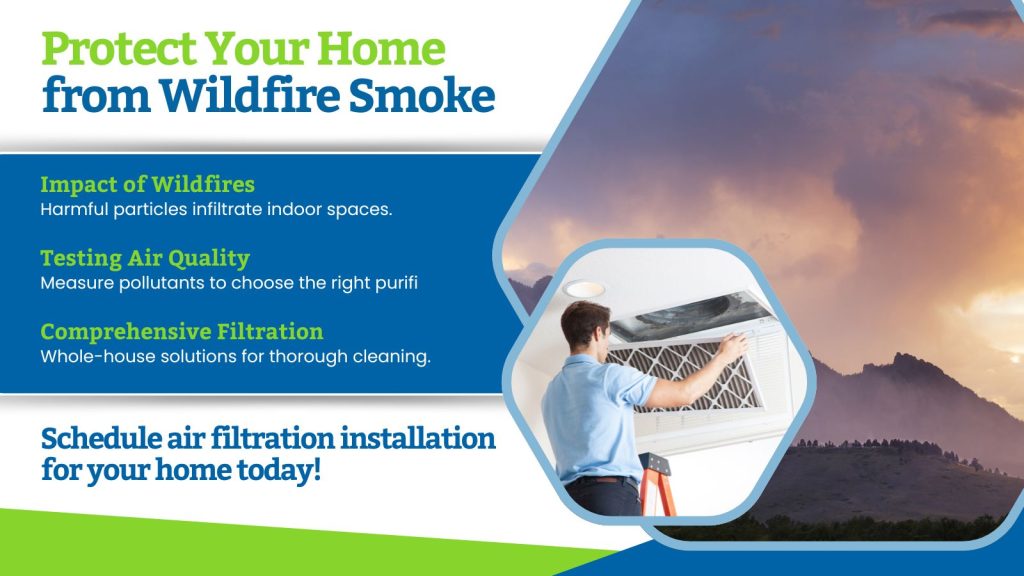The recent wildfires have brought awareness to the hazards posed by wildfire smoke. The thick smoke produced by wildfires contains harmful pollutants, including fine particulate matter (PM2.5), carbon monoxide, and toxic gases, which can infiltrate indoor spaces and cause respiratory issues, eye irritation, and long-term health complications. One of the most effective methods to combat wildfire smoke is whole-house air filtration. By using advanced air filtration systems in Glendale, homeowners can significantly reduce airborne contaminants, ensuring cleaner, safer indoor air. In this blog, we’ll explore how to optimize indoor air quality during wildfires to keep your home’s indoor air clean and safe.

The Impact of Wildfires on Indoor Air Quality
Wildfires release vast amounts of smoke, ash, and other harmful particles into the air. These microscopic particles enter your home through cracks or small openings around windows and doors and through mechanical ventilation systems like HVAC units with a fresh air intake. Then, they circulate throughout your home.
The fires don’t have to be nearby to negatively impact your home and family. Wind can carry pollutants hundreds of miles. You can also carry them on your body and clothes, and they can enter your HVAC system. The most concerning of these particles are called fine particulate matter (PM2.5), and they are small enough to penetrate deep into your lungs.
They cause respiratory issues like cough or shortness of breath and eye and skin irritation and can worsen conditions like asthma and allergies. Other concerning particle types are volatile organic compounds (VOCs) and carbon monoxide. Without taking action to clean your indoor air, these particles will recirculate repeatedly, leading to long-term health problems.
Air Quality Testing
You may notice a fine layer of particulate matter outside and in your home. However, it’s easy to assume that your indoor air is okay if you don’t see any visible particles or notice bad odors. But the pollutants produced by wildfires are microscopic and can also be odorless, making it difficult to identify their presence..
On any given day your indoor air quality may be as much as five times more polluted than the outdoor air. With the recent wildfires, there’s a good chance that it’s even worse for many homeowners in the area. Investing in air quality testing gives you measurable data that outlines exactly what’s in your air so you can make a decision about what type of air purifier is best to meet your needs.
Whole-Home Air Filtration Solutions
Portable air purifiers are a fantastic solution for very small spaces like an office or a single room. But they can’t meet your needs in a larger space like an apartment or home. Instead, we recommend investing in a whole-house solution that is professionally installed by our team to work with your HVAC system.
A whole-house model works effectively to clean your home’s air and help maintain a high level of indoor air quality. As the air gets pulled into your HVAC system, it passes through the purifier before blowing out into your home as heated or cooled air. Many filters and UV lights boast the ability to get your air 99.97% clean – and that includes particles from wildfires.
JMS Air Conditioning and Heating has your back. Call us today to schedule an appointment for indoor air quality services in Glendale, CA!


